Tales of Innocence Review
Innocence Lost
If ever there were a truism in the RPG industry, it is that any gaming system with even a mild track record in Japan will have at least one Tales game on it. The Nintendo DS had a rather better than mild record, and managed to have four Tales or Tales-adjacent titles to itself. So, after having reviewed the good, the bad, and the froggy, I now find myself finally writing about the one that was merely middling: Tales of Innocence. Developed by Alfa System after that studio’s relative success with the second and third Narikiri Dungeon games for the Game Boy Advance, Innocence demonstrates that a transition to a new platform and engine is challenging indeed.
The best thing about this game is its story, and in particular its protagonist. Luca Milda is a milquetoast, a wimp, a literal ninety-eight-pound weakling who can hardly swing a stick, but in his dreams he is Asura, demon general and lord of one half of the forces of Heaven in a civil war that would eventually bring the entire divine realm of Devaloka crashing down in a twilight of the gods. But his dreams are closer to reality than he might ever imagine. All around the modern, godless world of Innocence, random mortals are slowly awakening to the realization that they are the reincarnations of those who perished in the divine war of legend, and with that awakening comes strange and unpredictable power. The two greatest kingdoms of the continent have taken to conscripting these god-born individuals for the war effort, while a mysterious individual named Matthias works behind the scenes to further their own goals.
This is a cool setup for the narrative, and the tension arising from how the mortal characters are forced to deal with ancient memories is well done. Over the course of the game, more details of what went down in the final days of the war in heaven become known, even as the rising power of the gods’ memories force Luca and his friends to decide who they really are: themselves as they have grown in this life, or the beings they remember themselves to have been — even if they do not necessarily agree with what their past selves have done. Ancient vendettas, love triangles, and betrayals all gain new drama for the mortal heirs to deal with.
Alas, the game needed another ten good hours of story to fit things together better, or at least more stuff to do overall. The principle landmass of Innocence is typically vacant, as is so often the case with Tales games, with only the major cities and a few disconnected points of interest to visit. Added to this in out-of-the-way spots are the Guild Dungeons, which are the object of all the random and generic side-questing the game has to offer. The plot remains otherwise hyper-focused, with little diversion or deviation to help build up the party characters’ mortal sides better.
This is one of several Tales titles featuring character art by Mutsumi Inomata, and the way her designs have been adapted to the graphics capabilities of the Nintendo DS is markedly better than the bug-eyed look of the characters in Tempest. In general, the character models look, feel, and move well, though there are outliers that have the appearance of potato sacks stacked upon one another. There were definite limits to the capabilities of the DS going into the year 2007, and Innocence skirted close to them. Some towns, dungeons, and assorted other locales on the map are rendered well, even allowing for camera panning at times, but then there are the ones like the swamp level, where the sheer generic nature of the scenery makes the layout a virtual labyrinth simply because there are no landmarks at hand.
Innocence‘s combat follows the 3D model of the Linear Action Battle System, presenting a broad field of battle for the party to scurry around and whack stuff. It’s an improvement over the funky lane model of Tempest that came before, but also an example of why the two Wolf Studio games to succeed it both eschewed this approach in favor of the 2D model. The character and monster models are not shown at their best when seen up-close, and the camera does not always deign to work for the player’s benefit. As it is, it’s probably for the best that the player-controlled party member will always target the next monster automatically, rather than force the player to run around the field looking for a target.
This does lead to another issue, however. The only time the game allows free-running in battle is at the very end of each encounter, when the last monster is destroyed and its gold or items lay strewn about, waiting to be gathered up in the scant seconds provided. The problem is that every monster will drop gold or items, no matter when it is defeated, and yet the only time the player can make characters pick stuff up is at the end. And said treasure vanishes after about five seconds. There is a party AI function that can be bought from the Guild Dungeon shops later on to give some priority to picking stuff up, but that’s a whole different can of worms to deal with.
One good metric for quality in a Tales game is how soon or how often one engages the automatic fighting option in combat. For Hearts and Frogs, I used this sparingly, mainly for the toughest fights if I was having trouble keeping up with the monsters. For Tempest, I turned it on early and almost never turned it off. As usual, Innocence comes in somewhere between the two extremes, but in the cheesiest way. Save points in this game heal the party automatically upon setting foot on them, and enemies can spawn on-screen and close enough to the save point to be aggro’ed. Put these two details together, and it’s possible to simply park the party on a save spot, set them to auto-battle, and let nature take its course while you do something else for a few minutes at a time. While this is a good means of building levels for when a boss is too tough, the fact remains that this is both something you can do and something you might really need to do to make it past the next hurdle of the story.
The music in this game comes courtesy of Kazuhiro Nakamura, and it’s a good soundtrack overall, full of broad, orchestral themes and subtle tones. Innocence does possess voice acting to an astonishing extent for a DS game of its time, though the in-battle shouts and quips are the usual pointless filler. The voice-overs are, however, reserved for only the crucial scenes. Character skits, long a series’ staple, are left unvoiced.
Tales of Innocence is a step up from the series’ first entry on the DS, but it’s debatable how much of an improvement it is over Alfa System’s GBA entries. Its story concept is actually quite interesting, and could have benefited from more depth. The game also falls short in other areas, such as the mostly-vacant world and lack of battle freedom, showing that it’s not that simple to adapt prior experience to new platforms. While it’s not a bad game, it’s hard to describe it as anything but middle-of-the-road for this series.
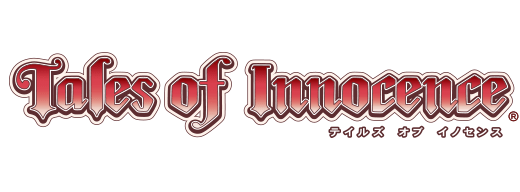

Creative plot concept
Decent attempt at 3D combat on Nintendo DS
Too much empty space on map
Too easy to lose out on loot drops




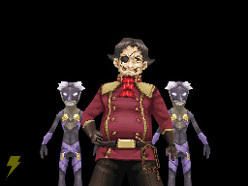

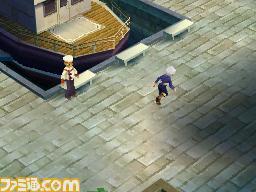
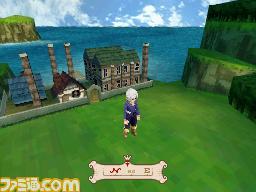


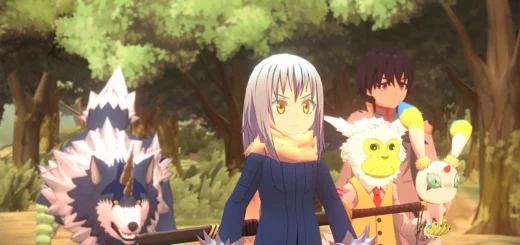




It’s actually not true that the game doesn’t enable free run until all enemies are defeated. All you need to do is hold R. Just like in various other 3D Tales games. With that, picking up loot during an ongoing battle is easy.